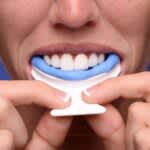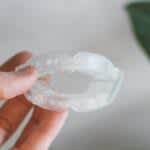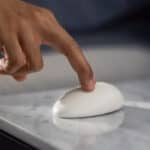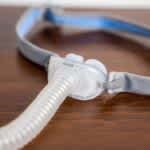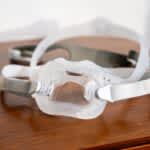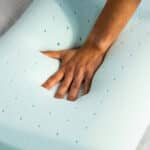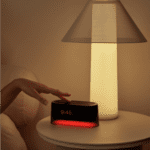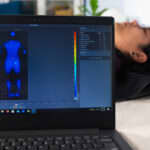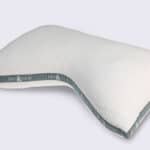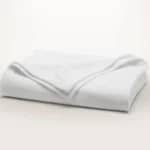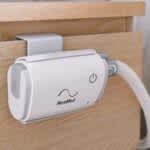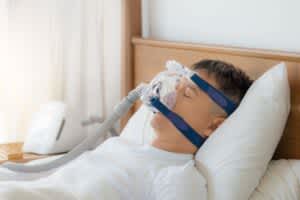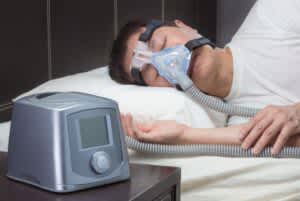Chiari malformations are disorders that affect the brain and spinal cord. There are several types of Chiari malformations. The most common types, Chiari malformation type 1 and type 2, are often accompanied by sleep apnea.
What Is Chiari Malformation?
Chiari malformations are abnormalities in certain parts of the brain and upper spine. In Chiari malformations, areas of the brain called the cerebellum and the brainstem are pushed through an opening in the skull and into the spinal canal.
There are multiple types of Chiari malformations, classified based on the magnitude of the condition and which parts of the brain are affected. Although it’s not known for sure how common Chiari malformations are, an estimated 1% to almost 4% of people may be affected.
What Are the Symptoms of Chiari Malformation?
The severity of Chiari malformations varies widely, and some people with these conditions don’t have any symptoms. When symptoms do occur, they vary based on the amount of pressure on the brain and spinal cord. They can also depend on the way the malformation affects the flow of cerebrospinal fluid, which is the fluid that surrounds these structures.
Symptoms of Chiari malformations can include:
- Headache
- Problems with balance
- Pain in the neck
- Insomnia
- Muscle weakness
- Numbness
- Swallowing problems
- Blurred vision
- Dizziness
- Difficulty with fine motor skills
- Breathing problems
Causes of Chiari Malformation
Experts don’t know for certain what causes Chiari malformations to develop, but they have several theories. Some believe that genetic mutations cause abnormal development in the lower part of the brain. Others suspect that too much cerebrospinal fluid around the brain pushes the brain tissue down during fetal development.
Some Chiari malformations develop when the skull is small or abnormally shaped, which forces brain tissue into the spinal canal. These abnormalities most commonly happen before birth, although trauma or disease can cause secondary Chiari malformation after someone is born.
Some Chiari malformations are associated with neural tube defects, which are types of birth defects that can occur in early pregnancy. Neural tube defects can cause a range of problems with the formation of the spine and brain, including spina bifida and other issues in brain development.
Chiari malformations are also linked to a number of other medical issues, including developmental and genetic conditions like neurofibromatosis, Noonan syndrome, and Robin sequence.
Types of Chiari Malformation
There are several types of Chiari malformations. Each is characterized by the type and severity of the abnormality in the brain and spine.
Chiari Malformation Type 1
In Chiari malformation type 1, the part of the brain known as the cerebellum is shaped abnormally, with sections of it bulging below the opening of the skull where the brain connects to the spinal cord. Type 1 is the most common type of Chiari malformation. While Chiari malformation type 1 does not always cause symptoms, it has been linked to sleep apnea.
Chiari Malformation Type 2
Chiari malformation type 2 is also called Arnold-Chiari malformation or classic Chiari malformation.
In type 2, several regions of the cerebellum are pushed down through the opening in the skull. This type is often accompanied by spinal defects and can interfere with the flow of cerebrospinal fluid between the brain and the spine. This sometimes leads to a buildup of fluid in the brain called hydrocephalus.
Other Chiari Malformations
Rarer types of Chiari malformations have also been identified. Type 3 and type 4 involve more severe abnormalities of the brain and upper spine.
Although this classification is not in wide usage, Chiari malformation type 1.5 may describe some cases. Type 1.5 is similar to types 1 and 2 but without spinal defects. Chiari malformation type 1.5 is associated with higher-than-average rates of obstructive sleep apnea.
How Are Chiari Malformation and Sleep Apnea Linked?
Sleep apnea is frequently seen in people with Chiari malformation types 1, type 2, and type 1.5. Both central and obstructive sleep apnea are more common in children and adults with Chiari malformations than they are in the general population.
In central sleep apnea, breathing stops briefly during sleep because the brain does not send proper signals to enable continuous breathing. This can be due to compression of the brainstem caused by a Chiari malformation, which can interfere with the brain’s control of breathing while a person is sleeping.
Although central sleep apnea is rare in the general population, affecting less than 1% of people, it is common among those who have Chiari malformations.
Obstructive sleep apnea also involves repeated disruptions in breathing during sleep. This type of apnea is caused by the collapse of the airway. Obstructive sleep apnea may occur when nerves that control the muscles of the throat are affected by Chiari malformation.
Treatment for Chiari Malformation and Sleep Apnea
Doctors may use several different approaches to treat Chiari malformation or manage symptoms caused by it, including sleep apnea. A person’s doctor is in the best position to assess their situation and determine which treatments are most likely to be beneficial.
- Conservative management: People with Chiari malformation type 1 who don’t have symptoms may be managed conservatively. This means that the doctor keeps an eye on their situation and may perform testing if any symptoms related to Chiari malformation arise.
- Surgery: Surgery may be appropriate for people with Chiari malformations that cause symptoms. The most common surgery creates more space for the brain and reduces pressure on the spinal cord.
- Positive airway pressure treatment: Positive airway pressure (PAP) treatments like CPAP and BiPAP can treat obstructive sleep apnea linked to Chiari malformation.
- Adaptive servo-ventilation: Adaptive servo-ventilation (ASV) assists breathing in people with central sleep apnea by providing variable air pressure while a person sleeps. This treatment has been used to treat central sleep apnea associated with Chiari malformation.
Frequently Asked Questions About Chiari Malformation
Does chiari malformation make you sleepy?
Chiari malformation may cause sleepiness indirectly. Excessive daytime sleepiness is a common symptom of sleep apnea. Although there is no evidence that Chiari malformations directly cause sleepiness, the sleep apnea that often accompanies a Chiari malformation is very likely to make a person sleepy.
Does chiari malformation affect your sleep?
In addition to disruptions in breathing, Chiari malformation can also contribute to insomnia. In particular, people with Chiari malformation may experience longer sleep latency, which means the amount of time it takes to fall asleep.
Does chiari malformation cause snoring?
Although not all people with Chiari malformations snore, this condition can lead to breathing problems during sleep that may include snoring. Snoring is also a common symptom of obstructive sleep apnea, which occurs more frequently in people with Chiari malformations.



